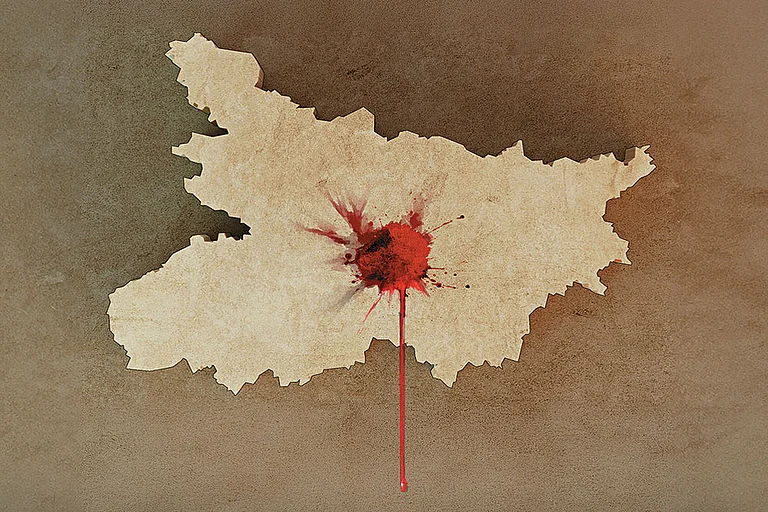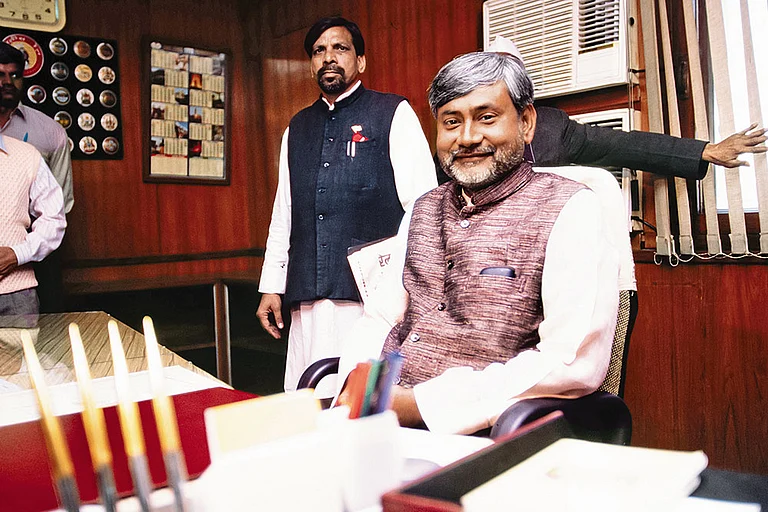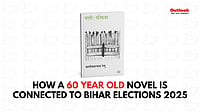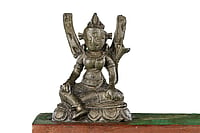
While women voters outnumbered men, at the heart of the ‘mahila’ wave were targeted welfare schemes—from Rs 10,000 cash deposits under Mukhyamantri Mahila Rojgar Yojana to the Jeevika Didi scheme.
Rahul Gandhi raised a very important issue of vote chori, which got some traction, but he did not follow up and went missing for a whole month just before the elections.
Bihar election was fought with no narrative or vision and the outcome, so overwhelmingly one-sided, has stumped political parties, voters and psephologists.
In the recent past, election outcomes, not just in India but across the world, have been so unpredictable and unforeseeable that political scientists have failed to comprehend or explain the electoral trends. The recently concluded Bihar election was no different—it was an election that was fought with no narrative or vision and the outcome, so overwhelmingly one-sided, has stumped political parties, voters as well as psephologists.
Anomalies are expected, especially in states like Bihar, where the voters have been inscrutable and have delivered unpredictable verdicts previously too. However, as with some other recent state and national elections, more questions have been raised on the credibility of the election process.
The most prominent of these questions is about the deletion of large number of voters in the SIR process: constituencies with the largest deletions have overwhelmingly returned NDA candidates as winners. Critics have also pointed to anomalies between the total number of eligible voters post-SIR, the voting percentage, and the total number of votes counted.
While women voters outnumbered men, at the heart of the ‘mahila’ wave were targeted welfare schemes—from Rs 10,000 cash deposits under Mukhyamantri Mahila Rojgar Yojana to the Jeevika Didi scheme—aimed at the social and economic empowerment of the rural poor. The NDA announced that it will transfer Rs 10,000 to over one crore women, nearly a third of all women voters. Questions are being asked as to why, when a similar distribution of benefits shortly before polls was disallowed by the Election Commission of India (ECI) in other states, the ECI allowed them to go ahead in Bihar. It cannot credibly be argued that these cash transfers did not affect the outcome.
What did the voters vote for? Nitish Kumar and the Janata Dal (United) went with the rhetoric that they represent development and the Rashtriya Janata Dal (RJD) represents Jungle Raj. However, Bihar languishes pretty much at the bottom on all developmental indices. It remains the poorest of the states. For the last 15 years, it has provided hyper-exploited labour to other parts of the country. The infrastructure and availability of healthcare for the masses is in complete shambles. Bridges have collapsed and schools are in very bad shape. There is no clear plan for any employment generation within the state, witnessed by the large number of migrant workers heading to other states for jobs. Some statements made by the Prime Minister that Bihar would be made into an AI hub did not find any traction with the voters. So, it’s clear that voters did not have development in mind when they voted for the ruling alliance. As Tejashwi Yadav, the main challenger to incumbent Chief Minister Nitish Kumar pointed out, the National Crime Records Bureau (NCRB) numbers elaborate on the dismal law and order situation.
Did they vote for “famous” candidates then? Twenty-five-year-old singer Maithili Thakur defeating an RJD veteran by a huge margin or even Anant Singh—who was arrested for the murder of a candidate just ahead of the elections—winning answers the question. It was bizarre that this Bahubali was interviewed widely and was projected as an endearing and buffoonish character by the media rather than a dreaded career criminal. I would add that it is perplexing how ‘Jungle Raj’ became an issue now, when the RJD, to whom the term attaches, did remarkably well in the last several elections that were closer to the time this term indicate: that of the RJD’s previous stint in power.
The thumping mandate to the NDA and the JD(U) also means the other political parties now need to introspect. So do the star politicians. Where did the Mahagathbandhan go wrong? Where did Tejashwi Yadav go wrong? He is a good politician and he speaks well. His rallies drew massive crowds. But that did not translate into votes. It is worth, for the MGB, to ask themselves: were these rallies representative of all suppressed castes, including the EBCs, or did they represent a narrower social spectrum, mostly of the RJD’s core M-Y (Muslim-Yadav) voters? Another issue is about the limits of Tejashwi as the CM face. No doubt, many jobless youths across castes saw in him someone who might deliver on jobs, going by his stint as deputy chief minister. But Bihar, like all other states, is an aspirational state and one of the factors that went against him was that he is a school dropout and has not put in any effort to get a degree.
Coming to Rahul Gandhi, he raised a very important issue of vote chori, which got some traction, but he did not follow up and went missing for a whole month just before the elections. It speaks of a complete lack of seriousness as a challenger to the electoral behemoth that is the BJP. Politics is more than just PowerPoint presentations. We learnt after the elections of the deep and wide campaign of the BJP, with multiple times more feet on the ground, with NDA party leaders and workers from the states where Bihari migrants seek employment—Delhi, Maharashtra, Andhra Pradesh, Gujarat, Haryana—or where the caste factor mattered, such as bringing CM Mohan Yadav of Madhya Pradesh. To rally the base, those with broad appeal for their communal rhetoric, such as Yogi Adityanath and Himanta Biswa Sarma—were also deployed.
The role of Prashant Kishor is, again, very mysterious. He raised a lot of serious issues revolving around employment, development, governance, education, cleanliness in politics and sale of seats. These issues were getting him a lot of traction. But then, again, they did not translate into votes. Kishor himself dropped out of the race, as did some of the candidates of the party. And his statement that if his party won any seats, he was inviting them to join either of the dominant coalitions: this threw shade on what his campaign really stood for.
Bihar election was fought with no narrative or vision and the outcome, so overwhelmingly one-sided, has stumped political parties, voters and psephologists.
The new M-Y factor that got unlocked during this election was mahila (women) and youth. They emerged as the new voters. The heightened emotions of this election did not come from the BJP or JD(U) voters; they came from the youth who went out there and said it is time for change. Demand for employment within the state was the key message that came through in the run-up to the elections. Women voters came out in full force as well. Not everyone got the Rs 10,000, and not all women were swayed by this welfare scheme. However, women talked about other issues that have been ailing them and came out to vote. Incidentally, these new voters, including women and youth, opted to vote in favour of the ruling alliance and ended up eroding the vote base of all other political parties. The unknown preferences of the new voters were what made the results difficult to predict before the elections, and must be factored into any deep explanation of the outcome.
However, that does not explain the migrant worker situation. Why would the migrants rally behind the ruling alliance, especially the way they were denied entry into their home state during the lockdown and the pandemic? Due to the lack of employment opportunities in the state, they again had to migrate for work, post-pandemic. It’s a known fact that they are exploited in other states in terms of wage theft and unequal pay. It is said in Bihar that people don’t have big aspirations and are happy with whatever little they have. It is untrue. These youths would not have migrated if they were happy in their home state. Both Narendra Modi and Amit Shah actually said that because of land acquisition issues, there was no scope for setting up factories that could create mass employment. The same is true for the promise to reopen sugar factories, though no answers were provided as to why they had remained closed over the last two decades. But then the NDA was able to neutralise the INDIA bloc’s questions and proposals on employment generation: it did not get the media space it deserved.
Was alcohol prohibition the game-changer? I remember, a long time ago, when the alcohol ban had been introduced, women, especially working women from the lower classes, were very happy. It was projected in the run-up to the elections that the fear of the lifting of the alcohol ban would prove to be a game-changer and women will come to vote because of that. Would Bihari women vote just on that basis?
Was this election fought on the premise of fake news and polarisation? The answer is negative. There were hardly any polarising speeches, and while PM Modi did his usual thing of curated videos of performing pujas and took cudgels against imaginary insults and threats to Chhath, as well as promising a temple to Sita maiyya in Sitamarhi (this had already been declared some years ago), he held back on his typical communal dog-whistles and fake news. This may have been because of Nitish’s continued image as non-communal, and his support among Muslims.
The media, however, played a peculiar role. Recently, the main preoccupation of the media has been to mock the Opposition rather than question the ruling party. The Bihar elections were no different. The fact that someone like Anant Singh got so much airtime and space and serious issues like vote chori were either just touched upon or ignored, highlights the way the very important state elections were covered by the media. Likewise, the media was complicit in burying serious issues and in making the elections about Chhath, Maithili Thakur and Anant Singh, while lampooning Rahul Gandhi and Tejashwi Yadav. It continued down the path it has taken since 2014, which is to defend those in power and help them build a narrative of success, while attacking those who challenge their power and preventing them from building a counter-narrative.
Was caste the king and the kingmaker? Caste has always been a key in Bihar elections. It is the main factor that enables you to have, wield and retain power. You have the extremely backward classes, the forward classes and a combination of a range of classes—all have been instrumental in giving political parties in Bihar an edge. This election was no different.
The people of Bihar have voted for a party with no succession plan. Nitish Kumar is reportedly unwell and there is speculation regarding his mental and physical health, yet people decided to give him a chance, as if there were no other options. This is at a time when no one is sure what Nitish stands for except bare political survival, and what developmental or democratic vision one could associate with him.
In the end, voters in Bihar proved that old is still gold for them. They rallied with caste and voted for Nitish Kumar, again. What now matters is—the chief minister should ensure that the promises made during election campaigns, cutting across parties, are fulfilled. We will then have the promised sugar mills, bridges will be reconstructed, schools and hospitals will be built, there will be many new airports, Bihari women will be empowered and there will be a Sita temple in Sitamarhi.
(Views expressed are personal)
MORE FROM THIS ISSUE
Subir Sinha is director, SOAS South Asia Institute
This article appeared as 'An Offering of Nothings' in Outlook’s December 1, 2025 issue as 'The Burden of Bihar' which explores how the latest election results tell their own story of continuity and aspiration, and the new government inherits a mandate weighted with expectations. The issue reveals how politics, people, and power intersect in ways that shape who we are—and where we go next.



































